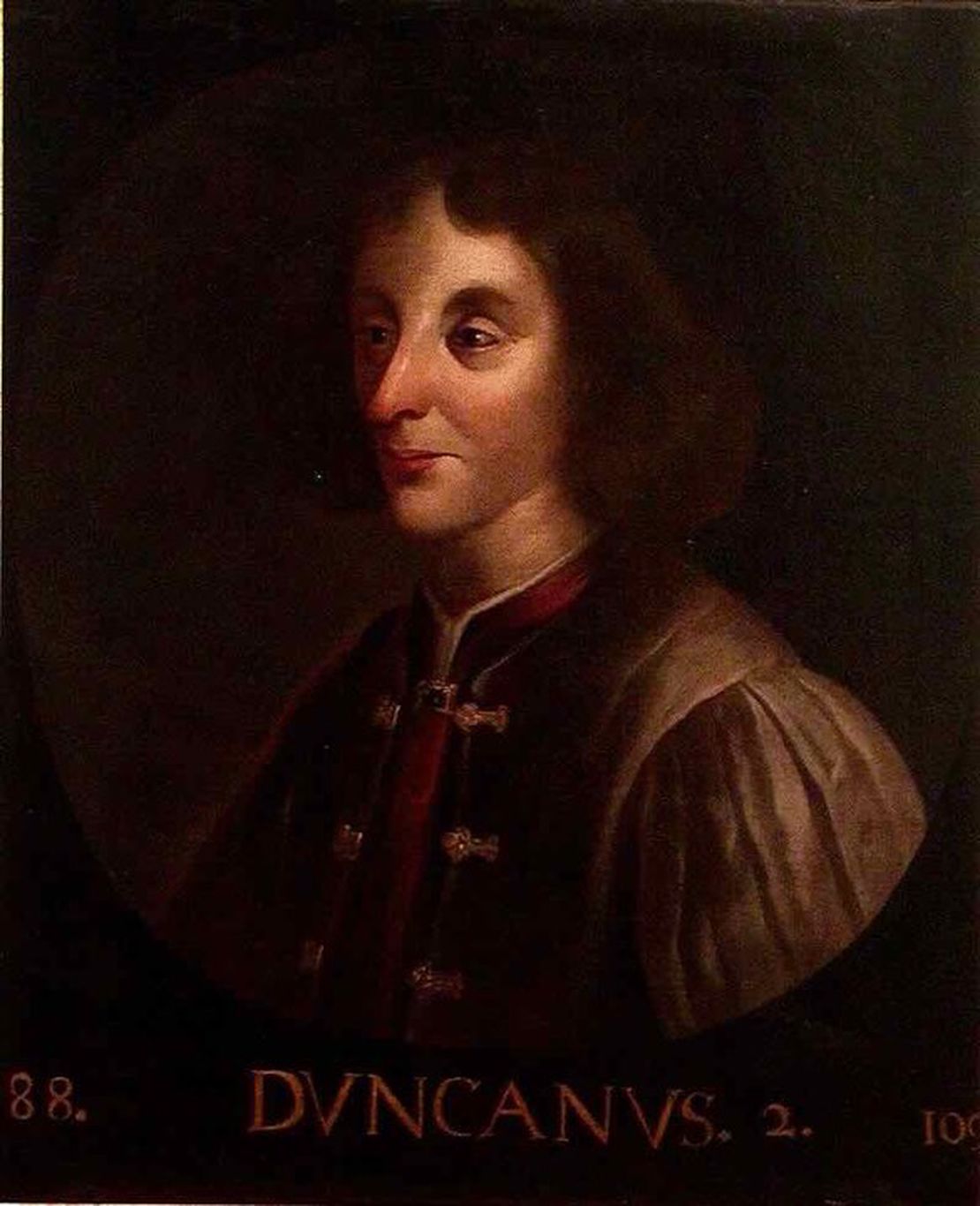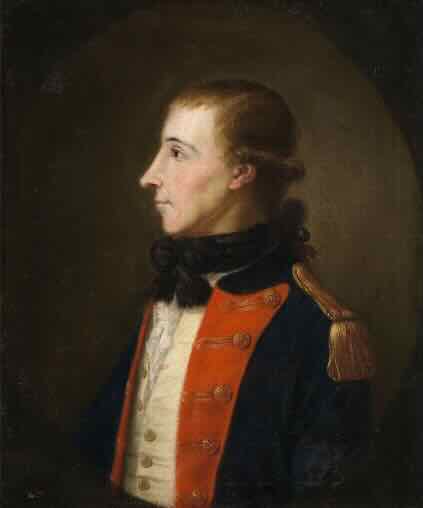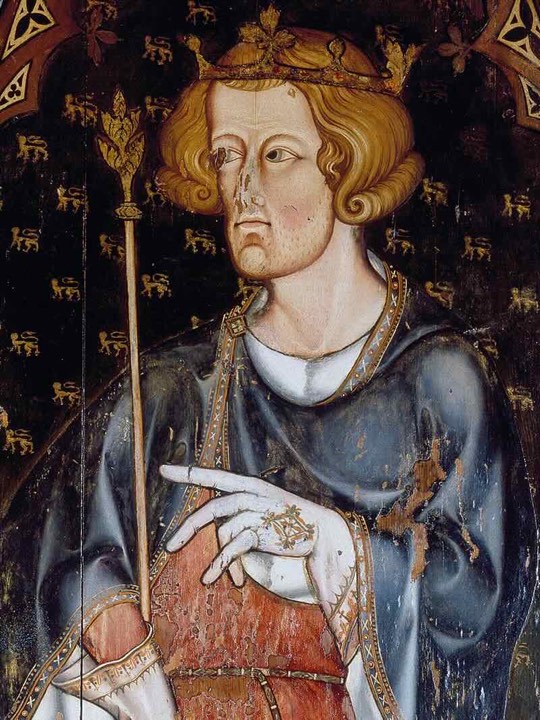- January 1, 1
Donnchad mac Máel Coluim (Modern Gaelic: Donnchadh mac Mhaoil Chaluim;[a] anglicised as Duncan II; c. 1060 – 12 November 1094) was King of Scots.
Duncan was son of King Malcolm III (Máel Coluim mac Donnchada) and his first wife Ingibiorg Finnsdottir, widow of Thorfinn Sigurdsson, was sent to the English Court of William the Conqueror as a guarantee that Malcolm would not attack England.
When King Malcolm III, Donald Bain (Domnall mac Máel Coluim), who was King Duncan II’s half-brother and rival, seized the throne of Scotland, becoming Donald III, but with English support Duncan deposed his uncle, becoming Duncan II, king of Scotland.
6 months later King Duncan II was killed at the Battle of Mondynes by an army led by his own half brothers Etmond mac Máel Coluim (Edmund) and Domnall mac Máel Coluim (Donald ?). The battle resulted in the defeat of Duncan II, and he was subsequently captured and killed. King Duncan II was killed on November 12, 1094, by Máel Petair, Mormaer of Mearns, in the Battle of Mondynes, also known as the Battle of Monthechin,near Kincardine in Aberdeenshire, Scotland.
Máel Petair of Mearns is the only known Mormaer of the Mearns. His name means “tonsured one of (Saint) Peter”.
He was buried at Dunfermline Abbey. Mondynes is 20 miles south of Aberdeen.
The political landscape of medieval Scotland during this period was marked by power struggles and conflicts among different factions vying for control. The events surrounding the Battle of Mondynes are part of this complex historical narrative.
By 1094, Duncan was leading a sizeable army, consisting of mercenary knights, and infantry. Many of these soldiers probably came from Northumbria, reflecting the familial association of Duncan to Gospatrick. In the early summer, Duncan led his army in an invasion of Scotland. Donald mobilized his own supporters and troops in response. The early phase of the war took place in June, resulting in victory for Duncan. Donald was forced to retreat towards the Scottish Highlands. Duncan was crowned king at Scone, but his support and authority probably did not extend north of the River Forth. His continued power was reliant on the presence of his Anglo-Norman allies.
The continued presence of a foreign occupation army was naturally resented by much of the local population. Duncan himself had spent most of his life abroad, making him an outsider. Months into his reign, landowners and prelates rose against the Normans. The occupation army fared poorly against a series of ongoing raids. Duncan was only able to maintain the throne by negotiating with the rebels. He agreed to their terms, sending most of his foreign supporters back to William.
Sending away his support troops soon backfired. The Lowland rebels seem to have ceased their activities, but Donald had spent the intervening months rebuilding his army and political support. In November 1094, Donald led his army to the Lowlands and confronted his nephew. On 12 November, Duncan was ambushed and killed in battle, having reigned for less than seven months. Primary sources are unclear about the exact manner of his death. The Annals of Inisfallen report that “Donnchadh [Duncan] son of Mael Coluim [Malcolm], king of Alba, was slain by Domnall [Donald], son of Donnchadh [Duncan]. That same Domnall, moreover, afterwards took the kingship of Alba.”
The Annals of Ulster report that “Donnchad son of Mael Coluim, king of Scotland, was treacherously killed by his own brothers Domnall and Edmond”. As Duncan had no brothers by those names, the text probably points to his uncle Donald and half-brother Edmund, though later texts identify a noble by the name of Máel Petair of Mearns (Malpeder) as the actual murderer.
William of Malmesbury later reported that Duncan was “murdered by the wickedness of his uncle Donald”. Florence of Worcester reported that Duncan was killed, but never states who killed him. In Chronicle of the Picts and Scots (1867), there is a 13th-century entry recording that Duncan was killed by Máel Petair (Malpeder), through the treachery of Donald. John of Fordun (14th century) finally recorded the better known account of the event, that Duncan was “slain at Monthechin by the Earl of Mernys…through the wiles of his uncle Donald”.
There are two contradictory accounts about the burial place of Duncan II. One reports him buried at Dunfermline Abbey, the other at the isle of Iona.

 ← Hours before his execution, Irish Rebel, Wolf Tone suffers a deep wound in his neck
← Hours before his execution, Irish Rebel, Wolf Tone suffers a deep wound in his neck
 Edward 1 of England rejects peace offers and launches war on Llywelen ap Gruffydd →
Edward 1 of England rejects peace offers and launches war on Llywelen ap Gruffydd →